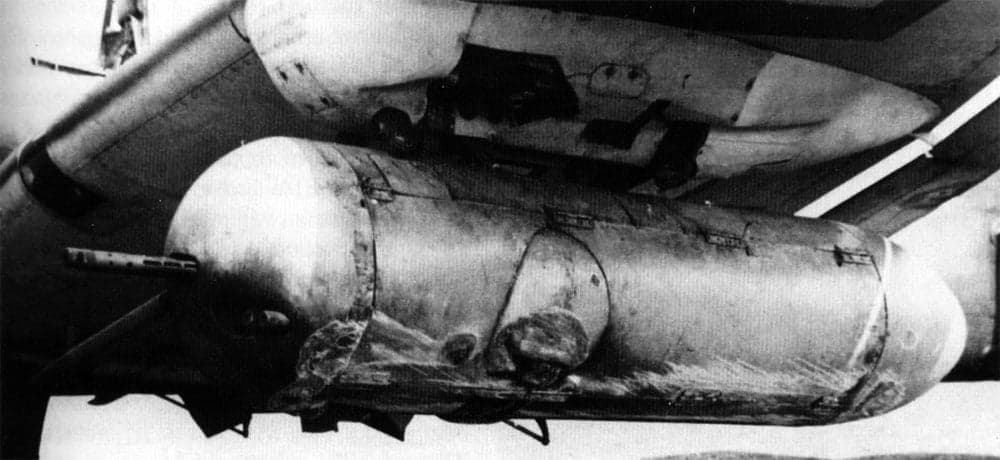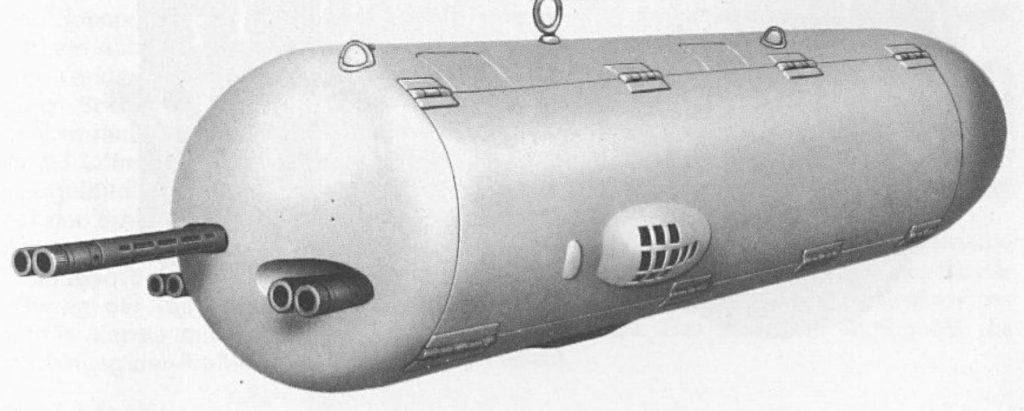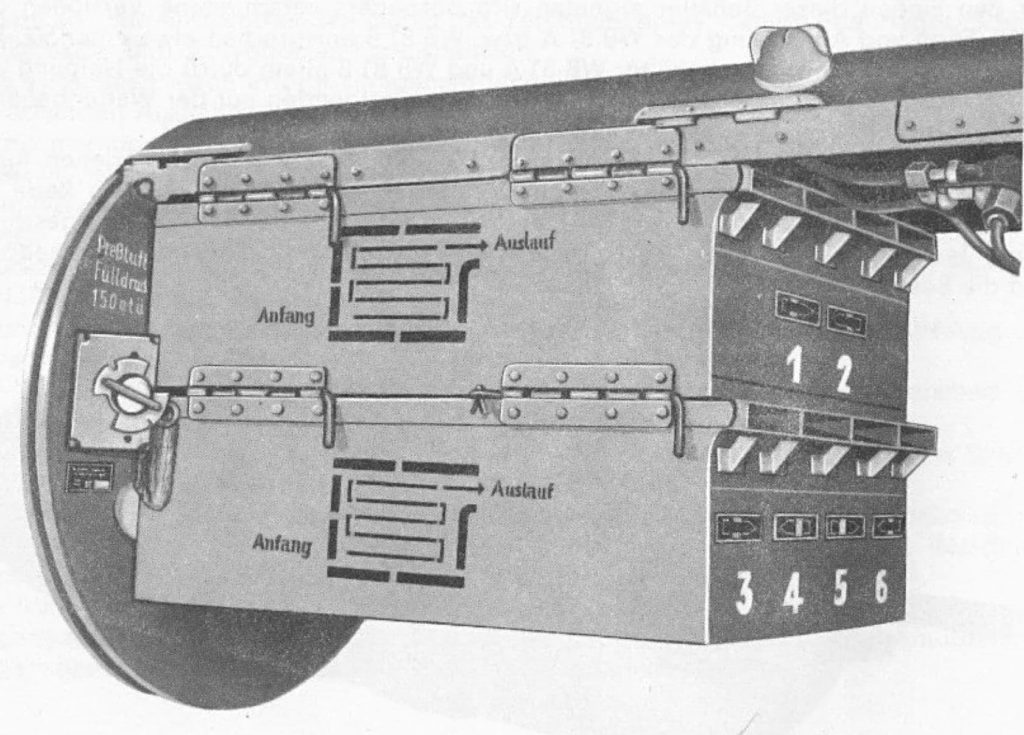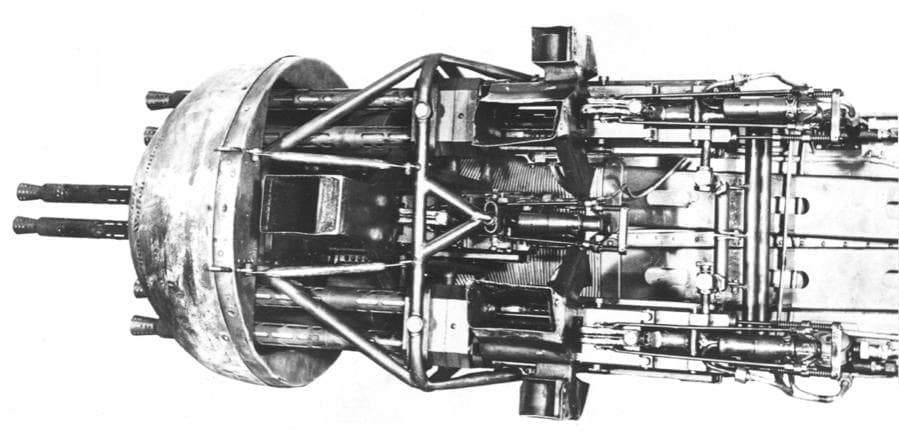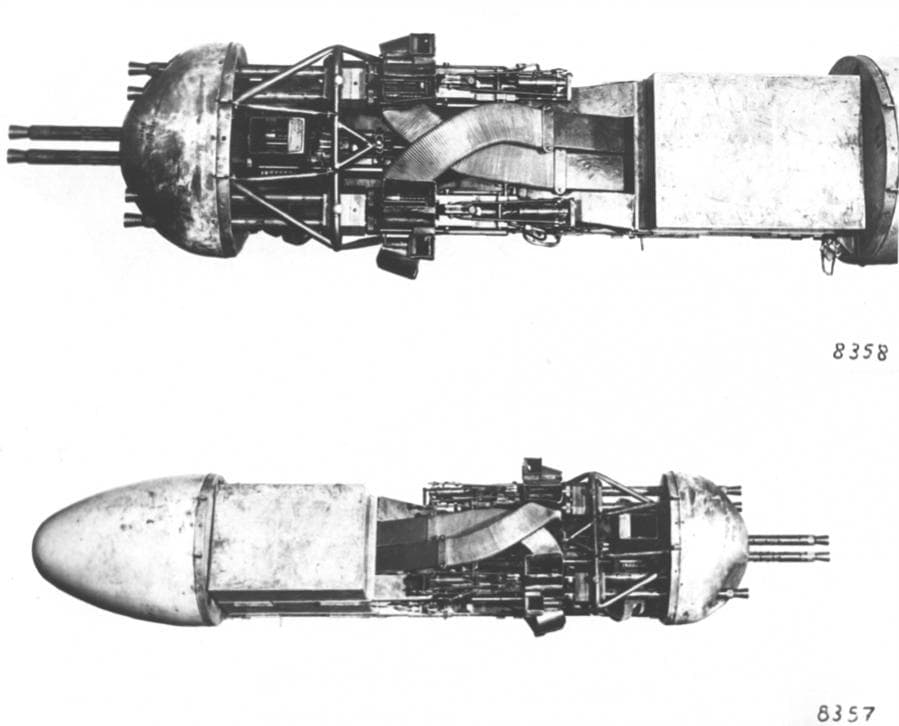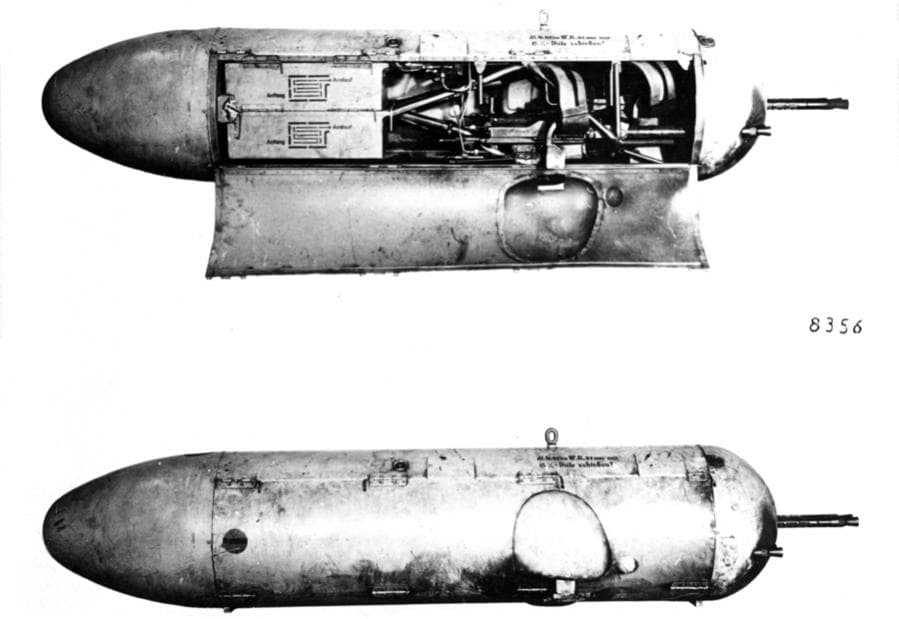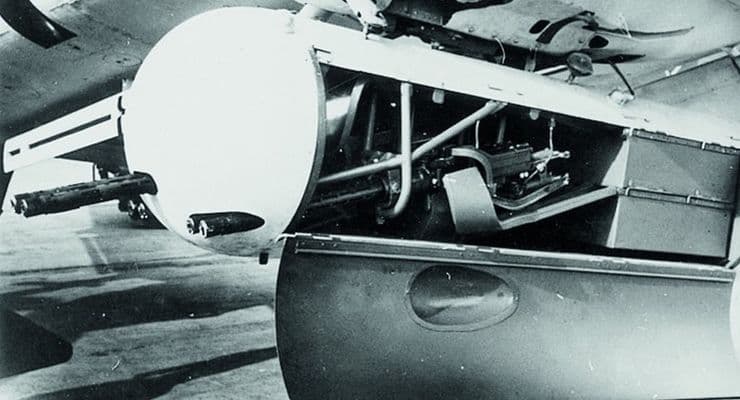The Waffenbehälter 81, lit. weapon container 81, was a German suspended gun pod. It was developed in 1942 to further increase the effectiveness of attackers in low level flights. Each pod contained three double-barrelled 9.72 mm MG 81 Z machine guns, giving the pod a theoretical fire rate of 10.000 r.p.m. This gave them their nickname Gießkanne, or watering can. It’s low calibre made it unsuitable against any form of armour, but it was highly effective against troops and supply dumps. Two variants were developed. The A variant had it’s guns under 15 degree angle aiming down, the B variant pointed forward. By both variants the outer two guns pointed 0.5 degrees outward, to create a larger area of effect.
The WB 81 was mostly used on Junkers Ju-87 Stuka’s with one pod under each wing. It could be used on Ju 88’s and Do 217 as well with tree pods under each wing. The Ju-88 and Do-217 however could only equip the A variant when facing forward, as to not hit the propeller.
The pods could be connected facing both forward and backward, and were often done both ways, one to fire when approaching target and one when flying away.
The WB-81 wasn’t a success, making the plane often too vulnerable to AA fire. As such, they were only rarely used on the eastern front.
Specifications
| Length | 2.5 meter (canister only) 2.73 meter (total) |
| Diameter | 0.5 meter |
| Weight | 180 kg with munition 140 kg without munition |
| Weapons | 3 * MG 81 Z |
| Rate of Fire | 10.000 rounds per minute |
| munition | 1500 7.92×57mm Mauser |
| Horizontal weapon angle | A variant: 15 degrees downward B variant: 0 degrees |
| Vertical weapon angle | A variant: 0.5 degrees outward for the outer guns B variant: all guns parallel |
| pressure | 150 atmosphere (in pressure tank) 30 atmosphere (in operating mechanism) |
| operating voltage | 22-29 Volt |
Construction
1. Ammunition boxes
Ammo is stored in two containers in the rear of the canister located above each other. The upper container contains the ammo for the middle MG 81 Z and the bottom for the outer MG 81 Z’s. Each ammo box was made of sheet metal and contains 4 compartments of 250 rounds. When in use, the outer compartments of the top box would be left empty.
2. Electrical equipment
The WB 81 has two cable connection sockets, one in the front and one in the back. The back socket is used when the pod is facing forward, the front socket when facing backwards. The unused socket is closed with a cover. Each socket has two EPD-FF/C connectors, one for powering the loading mechanism and one for firing the guns. The pod is connected with a cable to the connection socket on the wing of the aircraft.
3. Container
The entire system is contained in a cylindrical container, closed off by a round cap at the front and an aerodynamic cone at the back. The top of the container is load bearing, and the entire interior hangs from this carrier. On top of the carrier is a suspension lug which connects with the bomb rack. Two access hatches are located at either side of the canister.
4. suspension
The WB-81 could be mounted on ETC-500 and ETC-1800 bomb racks by means of a suspension lug on top of the container. The plane also needs to be equipped with the proper connection socket for operation. The two bumps at either side are there to make room for the ammo feed. On the B model, these also contained the casing discharge for the outer guns.
5. Internal Mounting Framework
The interior systems were mounted to the top of the canister, which was load bearing. From this the guns are suspended via a tubular construction, the ammo boxes and a load bearing rear bulkhead, to which the air pressure system is connected.
6. Air pressure system
The entire system is operated by compressed air. A 2 litre compressed air cylinder is mounted at the rear of the rear bulkhead. A filling connection is attached to the front of the bulkhead.
7. gun firing mechanism
For remote controlled firing and loading, each MG 81 Z has a special device attached, operated by compressed air.
8. Empty belt and casing discharge
Used belts and empty ammo casings are ejected though three holes in the bottom of the canister
9. Ammo belt guides
| Box | Connected MG |
| 1 | Right barrel of the middle MG |
| 2 | Left barrel of the middle MG |
| 3 | Right barrel of the right MG |
| 4 | Left barrel of the left MG |
| 5 | Right barrel of the left MG |
| 6 | Left barrel of the right MG |
The ammo belts are guided to the guns from the boxes by sheet metal ducts. They consist of two parts, a straight and a curved part. The ammo belts for the middle MG cross over to create a smoother curve in the guide.
Sources
- Waffen-Behälter 81 A und B. (1972, september). Waffen Revue, 6, 909–916.
